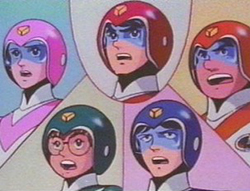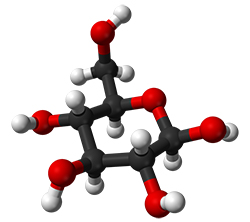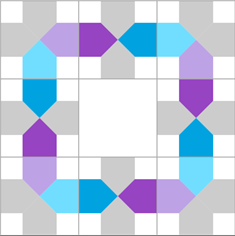
Illustrated by: Megan Joyce
“Ready to form Voltron! Activate interlock! … Megathrusters are go! Go Voltron Force! Form feet and legs! Form arms and body! And I’ll form the head!”

The ability to spontaneously build a robot in space has, sadly, only really been possible for the Voltron Force team, in an old cartoon TV show. However, a version of Voltron that is invisible to the naked eye is a reality even today.
Scientists are using living materials to build miniature robots at a nano scale. At this scale, scientists must make assembly automatic (meaning it will happen on its own). They can’t make normal building tools small enough to work at that level. Who are the scientists that can make things at that scale? They are bionanotechnologists.
What Is Bionanotechnology?
Bionanotechnology is the study of how the living world works, at an almost atomic scale. Knowledge of how the tiny parts of our world work can be used to improve and develop new technologies. To keep moving forward with the field, scientists must be able to manipulate nanoscopic forces. As a result, understanding how the world works at this scale is critical, especially when creating a nanoscopic Voltron!
Forces: Activate!
Building at the nanoscale is controlled by a few main forces or rules. These include bonding patterns, the driving forces of assembly, and the physical nature of the molecules.

Bonding patterns are the standard ways in which different molecules attach to one another. The typical bonding patterns seen in nature arise from molecules, or parts of a molecule, finding their best pairing partners.
Let’s think of this in terms of building a Voltron, from the cartoon. Each leg and arm of the Voltron forms from structures folding into a particular shape. If we imagine them fitting together magnetically, this would be similar to bonding forces that pull the different pieces together in specific ways on a nano scale.
The driving forces of assembly can be thought of more as how those shapes fit together, in a Lego-type fashion. Each leg and arm of the Voltron fit into the main body best in one particular position. The right arm would fit best within the right shoulder, and so on. At the nano scale, the joining of shapes can also be thought of in much the same way. These different pieces have specific shapes, which only connect with each other in certain ways. Check out our Nano Building Game to practice building with similar rules.
Lastly, the connection of subunits can be stronger if they are arranged in a specific way. For example, for any Lego set, there is a specific way in which you have to build the toy structure. Otherwise, if a few pieces are missing or added in the wrong spot, then the toy might be out of balance. In a similar way, nano-scale structures can be made more stable by stacking certain molecules that hold specific positions. This can form a strong foundation to build on.
Building with DNA

Scientists understand the nanoworld so well that they have been able to develop self-assembled nanomachines. These vary in size and function. Such nanomachines have been made of many different types of molecules, such as proteins, fats, polymers, and DNA.
Each of these molecules tend to work in different ways. However, many of them rely on changes in their environment to work, through changes in the acidity, temperature, or even exposure to light. Many of these nanomachines have been used to deliver drugs to treat diseases or to enhance farming practices.
Although these machines have been revolutionary for the field, many are not complex enough for our needs. Some also need to be more programmable, to do certain things. These advancements can be made by creating DNA-based nanomachines.
The field of nanotechnology took a huge leap in 1982. This was when DNA was added to the scientist’s nano toolbox. At first, scientists wanted to use DNA nanotechnology to crystallize proteins to learn their physical structures. X-ray crystallography is often used to solve the structure of crystallized proteins but crystallizing protein is a challenge for many reasons. You need to get pure protein, try to grow protein crystals under different conditions, and then have optimal crystals for testing.

The idea behind DNA nanotechnology was to use the DNA as a crystal lattice (or support structure), to hold protein. It’s kind of like building a tray that holds pots for plants in specific places, rather than spreading plant seeds around a box full of dirt. This would then hopefully aid in the formation of the protein-DNA complex. However, this was no easy feat. It took researchers almost 30 years to get the first 3-D DNA crystal. Much work is currently being done to expand these lattices, to fulfill the original goal of the field, stated in 1982.
DNA Knowledge is Nano-Power
Not only has DNA helped design crystals, but it has led to the creation of intricate nanomachines. One of the main benefits to DNA nanotechnology is that it is such a well-studied molecule. Because we understand it so well, structures can be assembled in very exact ways. If we think of DNA as very tiny Lego bricks, then these bricks can be automictically assembled into a wide variety of nano-scale shapes and structures. This allows what seems like automatic assembly, like with the nano-Voltron. Also, due to the highly programmable nature of DNA, it can be used to build bigger and more complex structures.

What does programmable mean here? Well, it means that DNA follows very specific base pairing rules. These rules state that each base of a nucleotide has a partner that it will always bind to. Adenine (A) binds with Thymine (T) and Guanine (G) binds with Cytosine (C). We can think of the As and Ts as the two-studded Lego blocks, and the Ts and Gs as the three-studded Lego blocks. The two-studded blocks fit together perfectly, but they don’t pair well with the others. The same goes for the three-studded Lego blocks. These rules let scientists design very detailed structures. Scientists have developed polyhedra (3D shapes with more than 6 sides), nanotweezers, a nanoscale Voltron, and more.
Because the range of DNA nanostructures that can be created is so vast, the ways they can be used also seem limitless. Many nanostructures are being used in the field of medicine, often as drug delivery vehicles. The drug cargo has varied from small molecules, all the way up to larger proteins.
An advantage of DNA nanotechnology is that you can program in tools that can control release of the cargo. We know how DNA is affected by its surroundings, so changes can be used as tools to alter the structure shape and release cargo. This way, a drug of interest could be delivered to one specific place at a desired time.
One major setback to using DNA in nanomachines is how easily DNA breaks down. It might be difficult for a structure to get to a target tissue before the DNA is broken down. However, these problems are the focus of current research. In time, researchers hope to be able to build structures of the same complexity that nature has built over the course of millions of years.
Nano Building Game

Want to try your hand at some bionanoengineering practice? Build specific patterns using sets of colored blocks in the game Nano Building. Make sure to try to easy, medium, and hard levels, or try to build your own structure in the Sandbox section of the game.
Curiosity Rover illustration by NASA. This section of Ask A Biologist was funded by NSF Grant Award number 1753387.
Read more about: Nanobiotechnology: Nature's Tiny Machines
Bibliographic details:
- Article: Nanobiotechnology: Nature's Tiny Machines
- Author(s): Julio Bernal, Tara MacCulloch
- Publisher: Arizona State University School of Life Sciences Ask A Biologist
- Site name: ASU - Ask A Biologist
- Date published:
- Date accessed:
- Link: https://askabiologist.asu.edu/explore/nanobiotechnology
APA Style
Julio Bernal, Tara MacCulloch. (). Nanobiotechnology: Nature's Tiny Machines. ASU - Ask A Biologist. Retrieved from https://askabiologist.asu.edu/explore/nanobiotechnology
Chicago Manual of Style
Julio Bernal, Tara MacCulloch. "Nanobiotechnology: Nature's Tiny Machines". ASU - Ask A Biologist. . https://askabiologist.asu.edu/explore/nanobiotechnology
Julio Bernal, Tara MacCulloch. "Nanobiotechnology: Nature's Tiny Machines". ASU - Ask A Biologist. . ASU - Ask A Biologist, Web. https://askabiologist.asu.edu/explore/nanobiotechnology
MLA 2017 Style

When you think of robots, you may think of ones that are used in factories, or the Curiosity Rover that explores the surface of Mars. But what about robots so tiny, they could fit into your cells?
How, exactly, do scientists build at a nano scale? Get a feel for it in our game, Nano Building.
Want to learn more about being a scientist who studies bionanoengineering? Visit Building at a Nanoscale.
Be Part of
Ask A Biologist
By volunteering, or simply sending us feedback on the site. Scientists, teachers, writers, illustrators, and translators are all important to the program. If you are interested in helping with the website we have a Volunteers page to get the process started.

